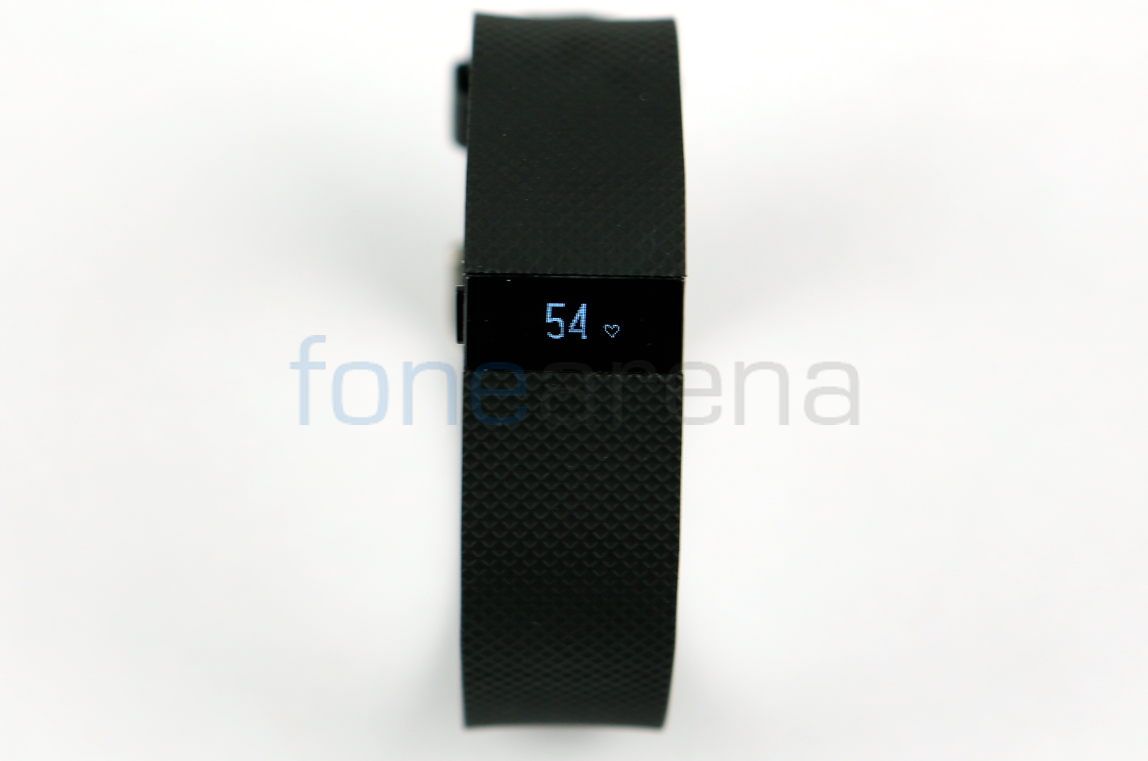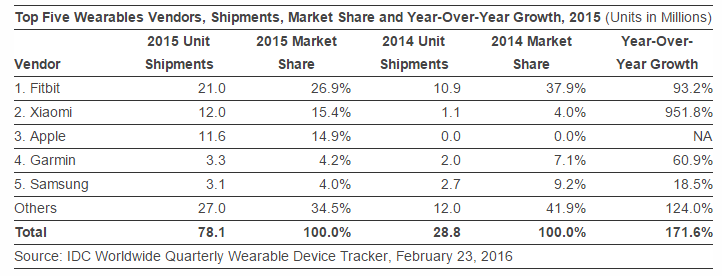Buoyed by the growing popularity of fitness trackers and the Apple Watch, the worldwide wearable device market showed a notable increase in Q4 2015. As per the International Data Corporation (IDC)Worldwide Quarterly Wearable Device Tracker, vendors shipped 27.4 million units in the Q4 2015, a 126.9 percent increase from the year before.

Global wearable shipment was 78.1 million units, up a strong 171.6% over 2014, said IDC. Fitbit continued to top the wearables market and became the undisputed leader in Q4 2015 as well with 29.5 percent market share. The company recorded a 52.8 percent year-over-year growth with 8.1 million units in Q4, while for the entire 2015 it posted 93.2 percent with a total of 21 million units. Apple came in second in Q4 2015 as it shipped 4.1 million units of Apple Watch with 15% of market share however it had number 3 spot in case of the whole 2015 with 11.6 million units shipped.
Xiaomi maker of the budget priced Mi Band fitness tracker, shipped 2.7 million units in the Q4 2015, up 258.5 percent from a year earlier. It had a market share of 9.7%. Samsung and Garmin were fourth and fifth with 4.9% and 3.5% market share respectively.

Ramon Llamas, Research Manager for IDC’s Wearables team said
Triple-digit growth highlights growing interest in the wearables market from both end-users and vendors. It shows that wearables are not just for the technophiles and early adopters; wearables can exist and are welcome in the mass market. And since wearables have yet to fully penetrate the mass market, there is still plenty of room for growth in multiple vectors: new vendors, form factors, applications, and use cases. This will help propel the market further. What is warranted is continued innovation and development. The market can only get so far with ‘me too’ and ‘copycat’ wearable devices. End-users expect improvement from what they have now, and new applications to spur replacement and increased adoption. Historical data, like steps taken and calories burned, has been a very good start. Prescriptive data, like what else a user can do to live a healthier life, coupled with popular applications like social media, news, and navigation, will push wearables further, and attract more users.
Jitesh Ubrani, Senior Research Analyst for IDC Mobile Device Trackers.
Fashion and design will play an equally important role in increasing adoption. Simply encrusting your watch with gold and jewels is not going to cut it. Rather forming partnerships with notable fashion icons, a route taken by Fitbit and Apple, is far more likely to succeed. It is also worth noting that the wearables market isn’t just about smartwatches and fitness bands. Though the top 5 certainly dominate with wrist-worn devices, there’s been an immense amount of growth in other form factors like clothing, footwear, and eyewear – form factors that arguably require even more fashion sense than watches or bands.

